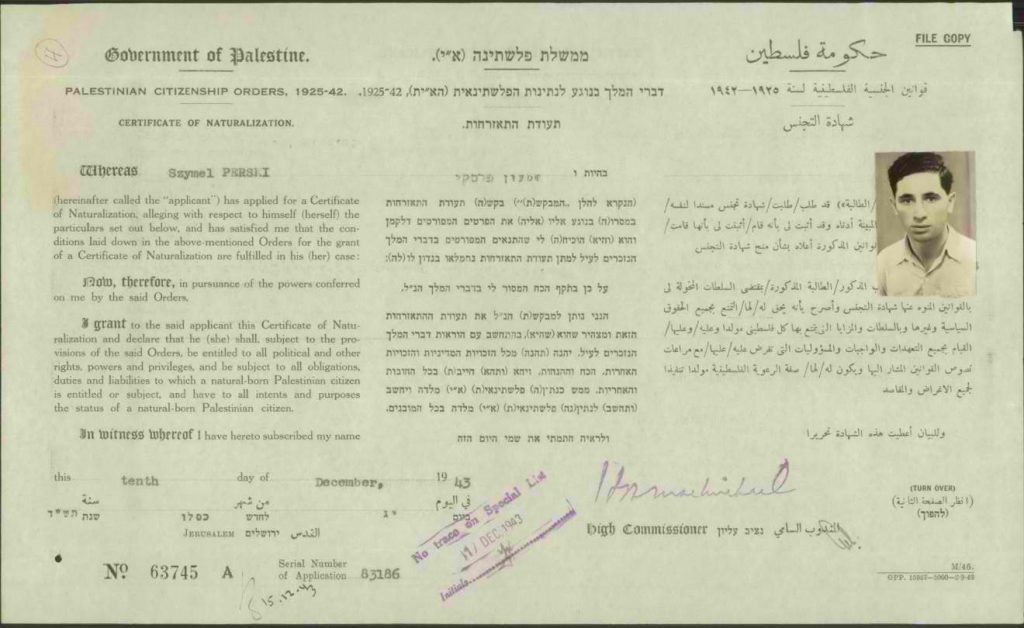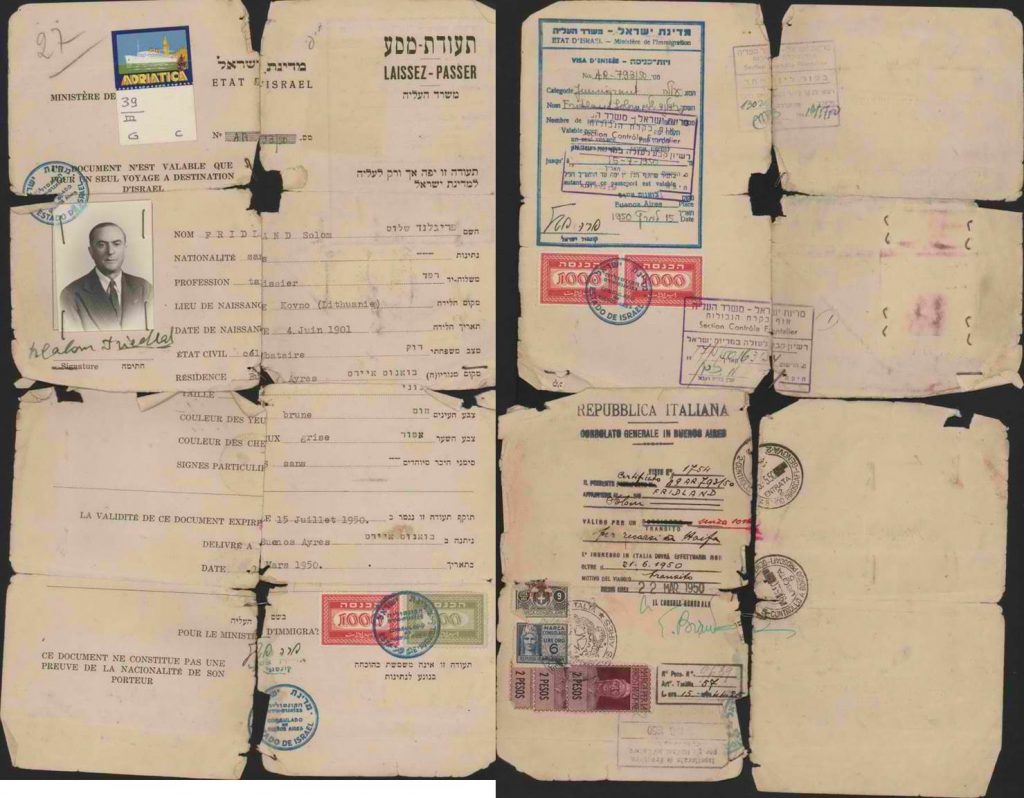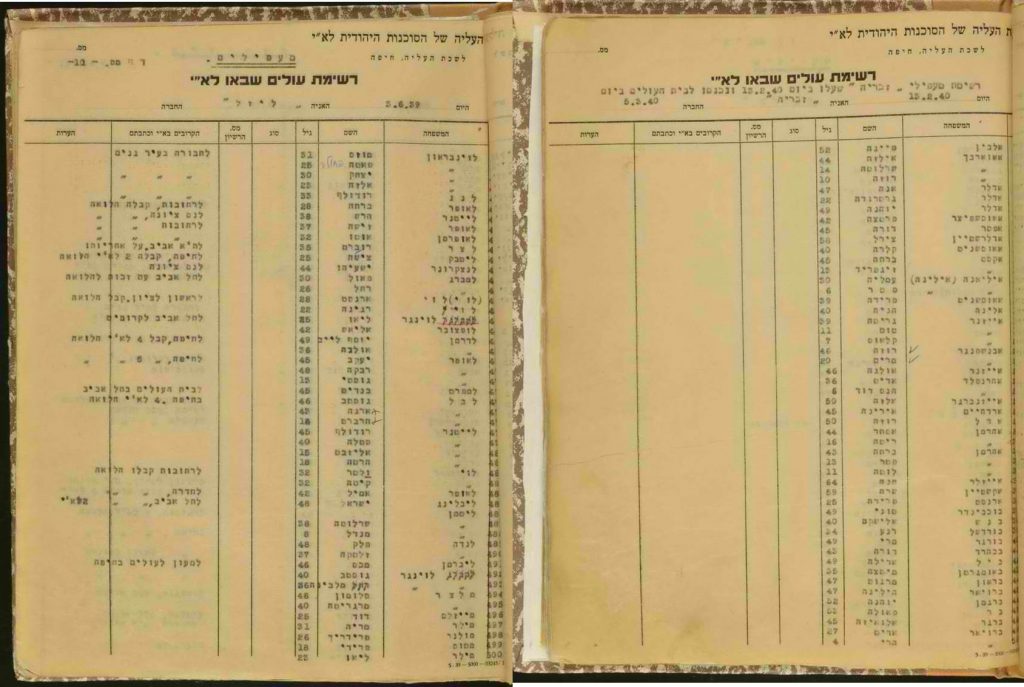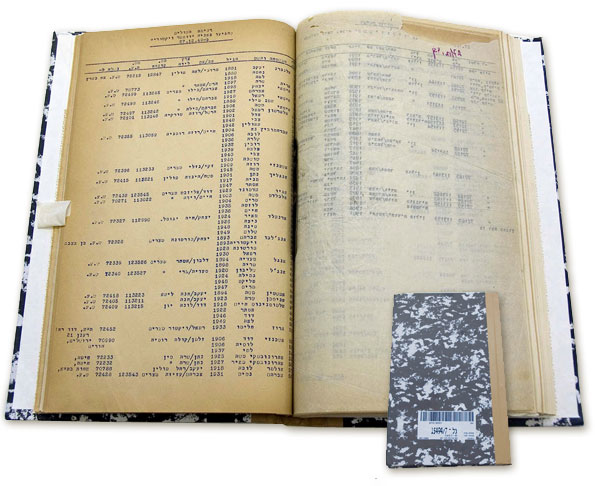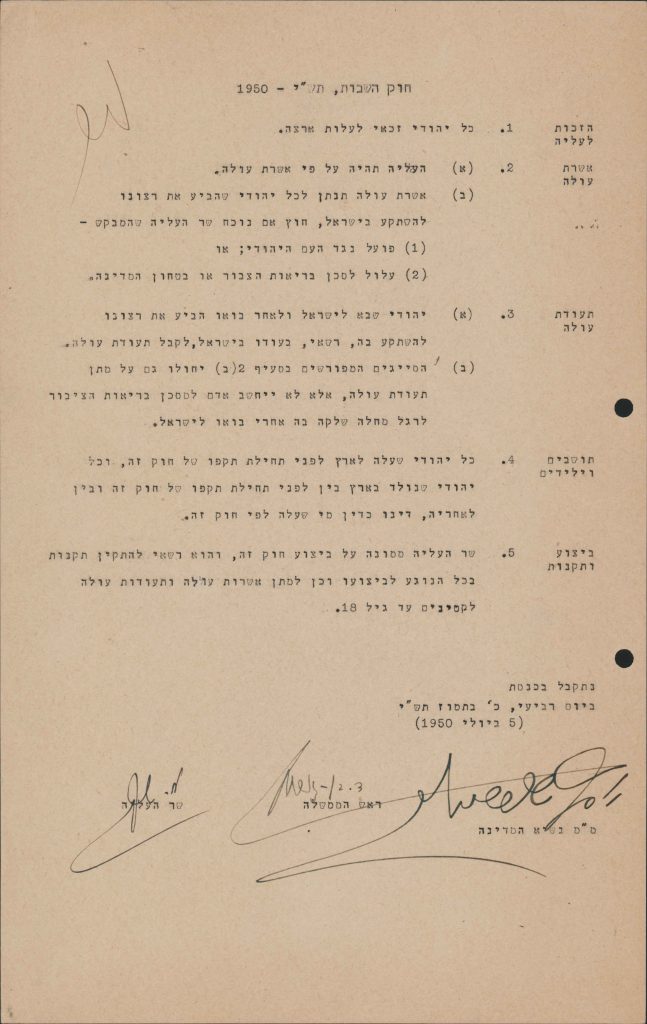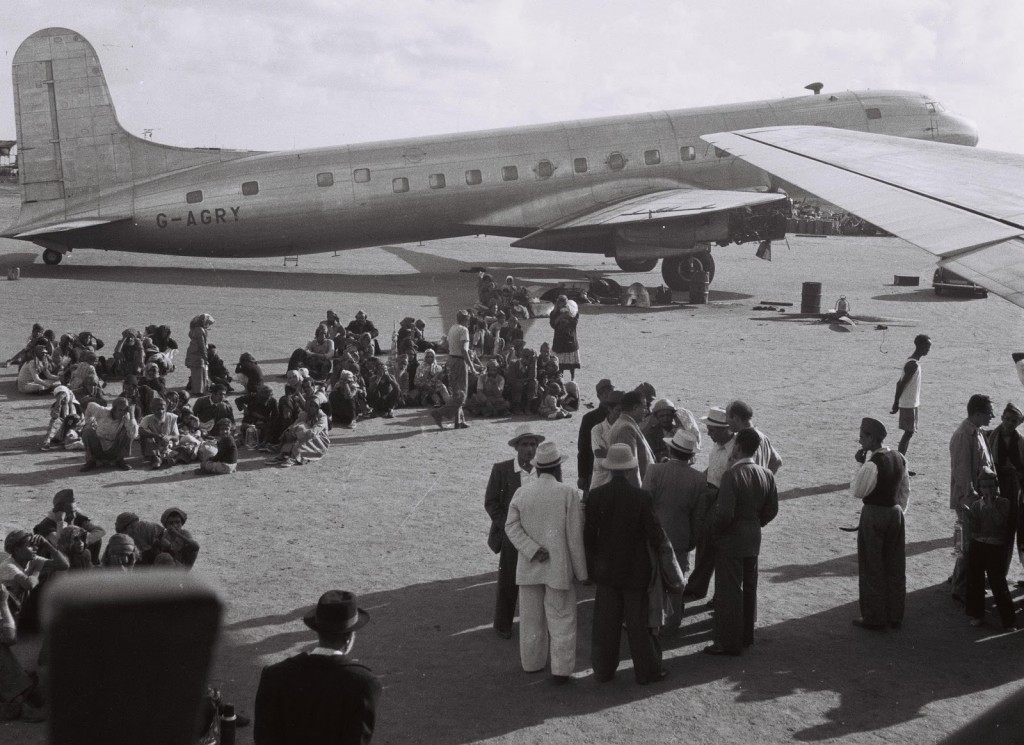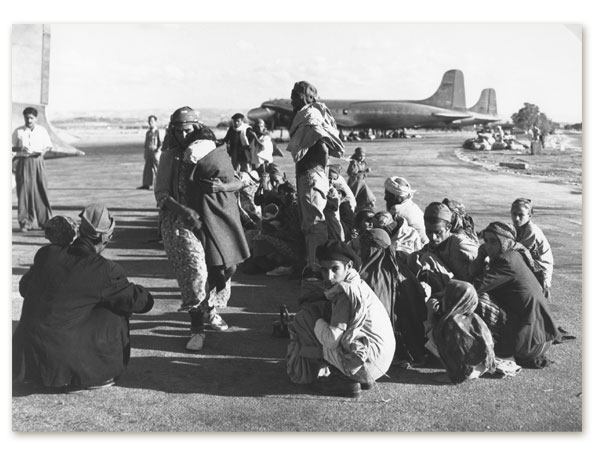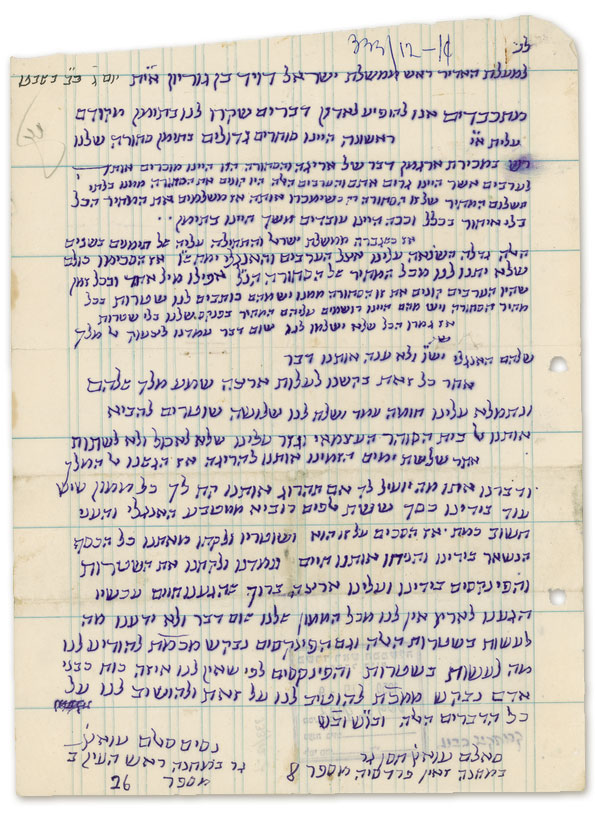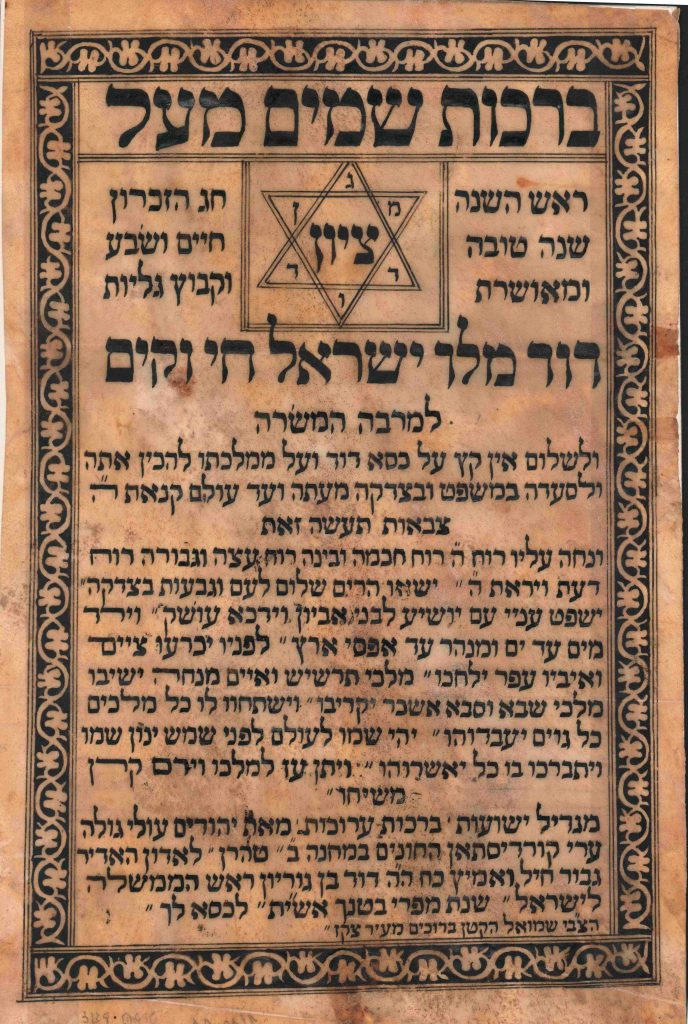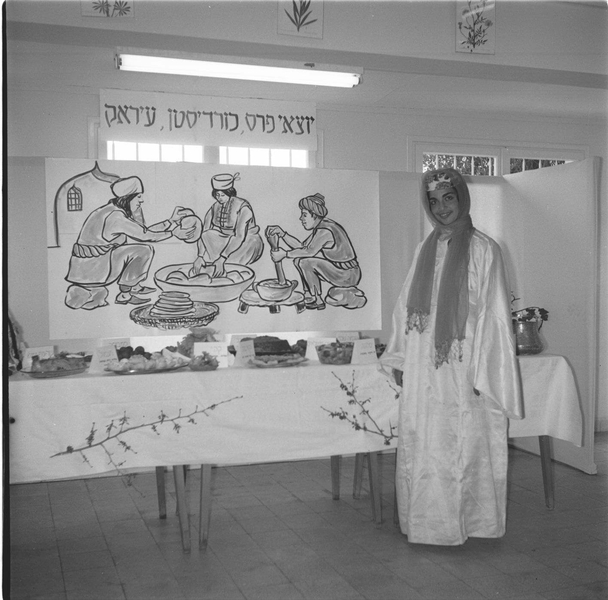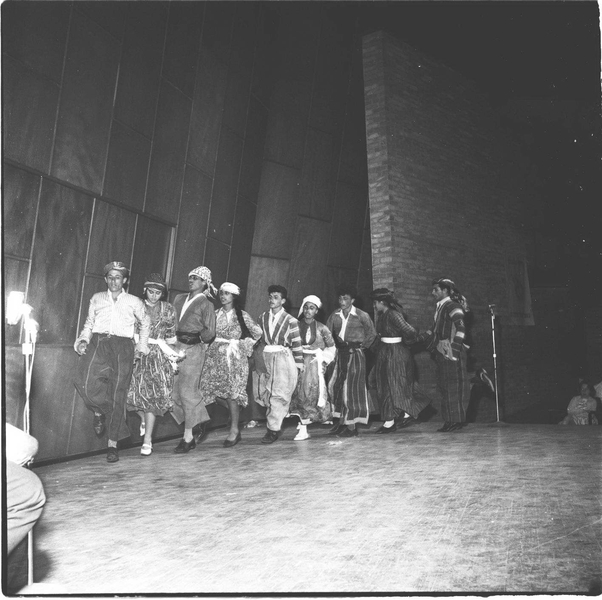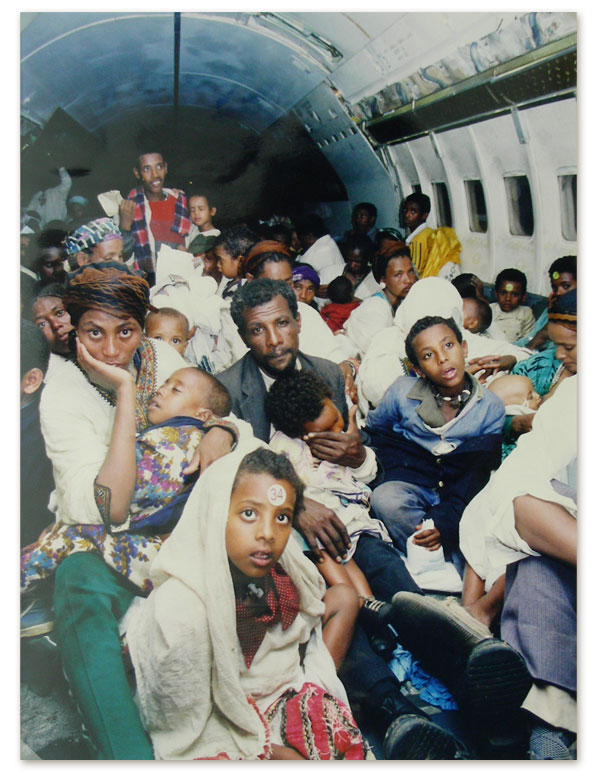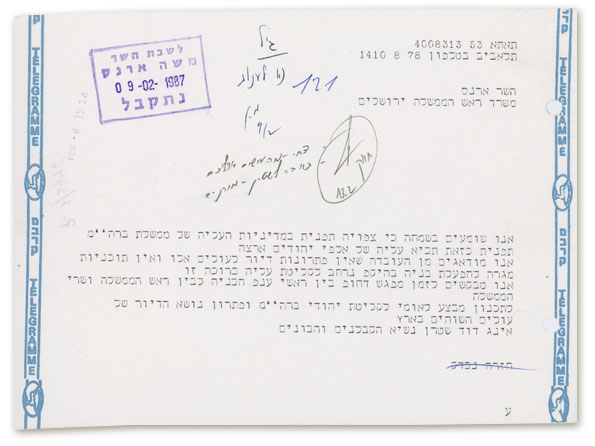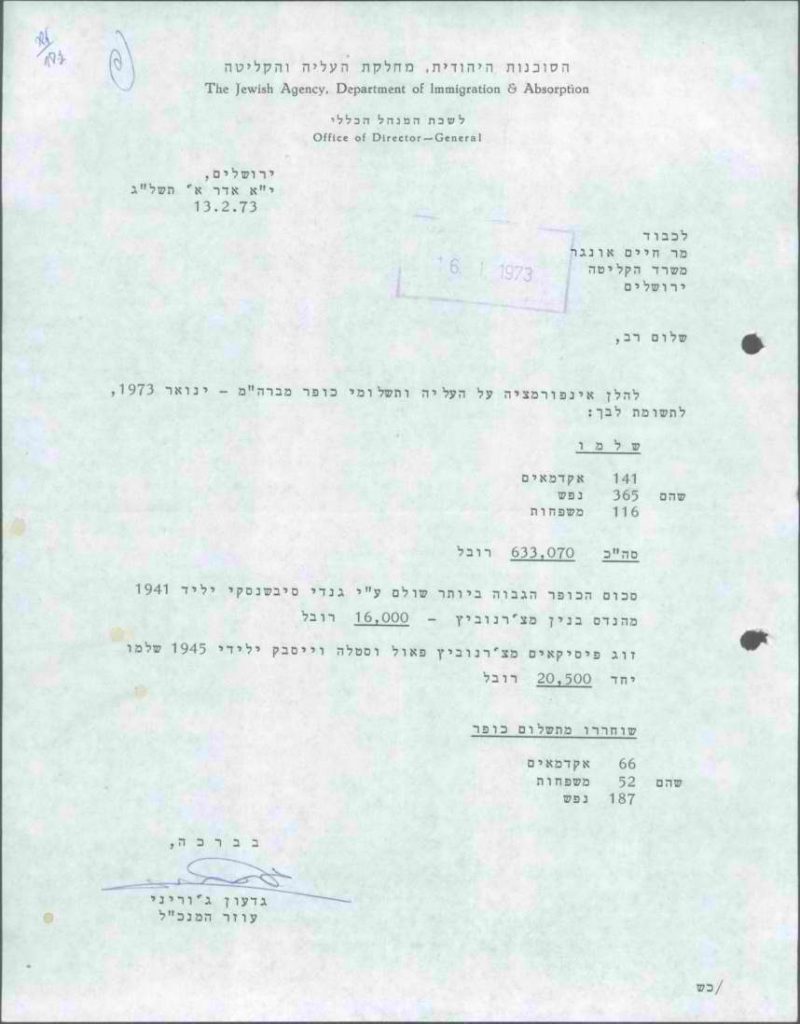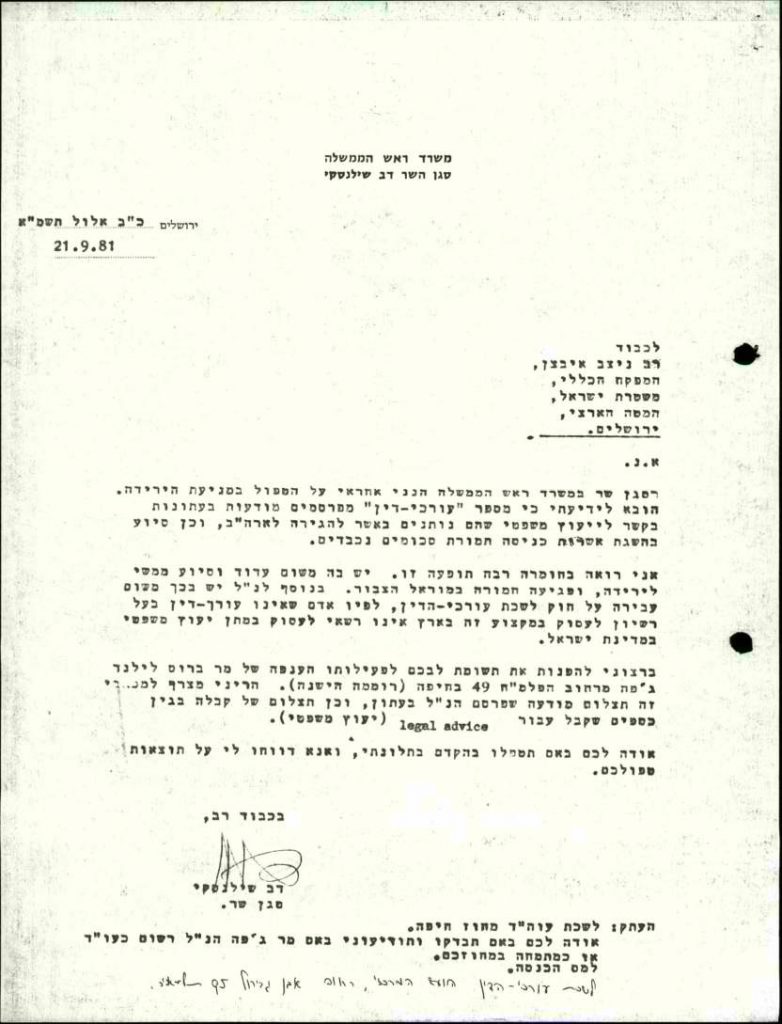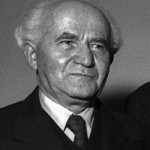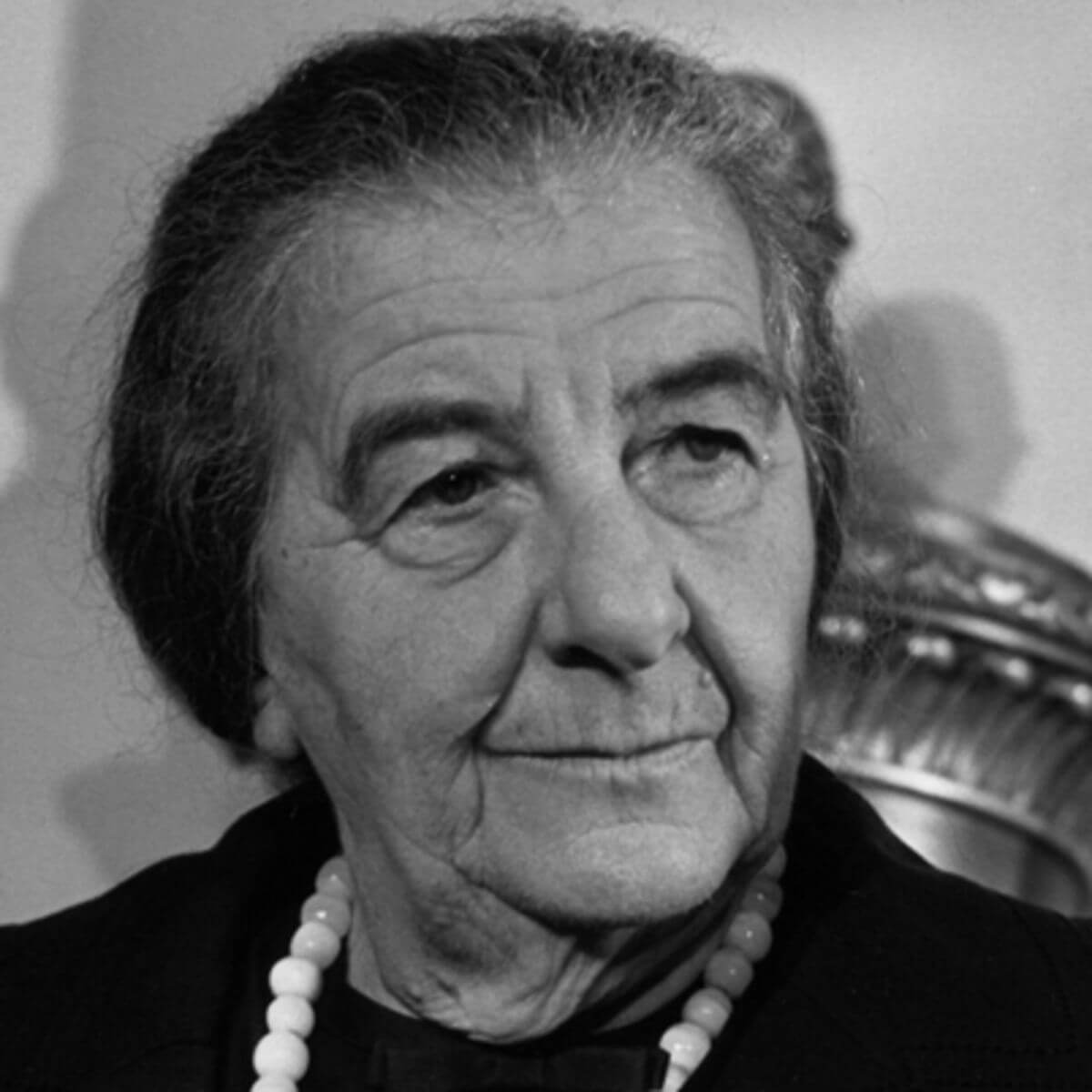“Open for Jewish immigration and for the Ingathering of the Exiles…”
Registrar of new immigrants
From 1919 onward, immigration (or aliyah) officials of the Jewish Agency kept records on all Jews entering the Land of Israel. This listing was done in successive fashion at all seaports, airports, and border crossings, and was filed in standardized format up until 1975. The logbooks thus contained a chronological listing of all immigrants – as well as tourists and returning residents – according to the ships, airplanes, or trains on which they arrived. From the logbooks dating from the years of mass immigration immediately following the establishment of the state, it is clearly evident that immigrants originated from a remarkable diversity of lands. In the State Archives, a few thousand immigration documents are preserved, including passports, identity cards, immigration and aliyah certificates, and other such items belonging to Jews from all corners of the globe. Most of the documents date from the late 1940s to the mid-fifties.
The material was apparently collected as a result of a procedure which was in force at the time, under which immigrants would be granted Israeli citizenship. This procedure involved the renouncement of previous citizenship and the surrender of one’s former passport or citizenship documents at the Ministry of the Interior, in exchange for an Israeli passport and/or identity card. A small number of passports were actually obtained from the immigration office of the Palestine government from the days of the British Mandate, because the Mandatory authorities followed naturalization procedures that were similar to the subsequent Israeli procedures. In addition to passports and documents issued by sovereign states, the collection includes documents originating from an assortment of organizations and international bodies, such as the “Nansen passports” issued by the League of Nations, and documents issued by the “Victims of Fascism” organization; the British military occupation force in Cyrenaica, Libya; the Western military administration in Occupied Germany; and other organizations. Please note that this collection represents no more than a random sampling.

